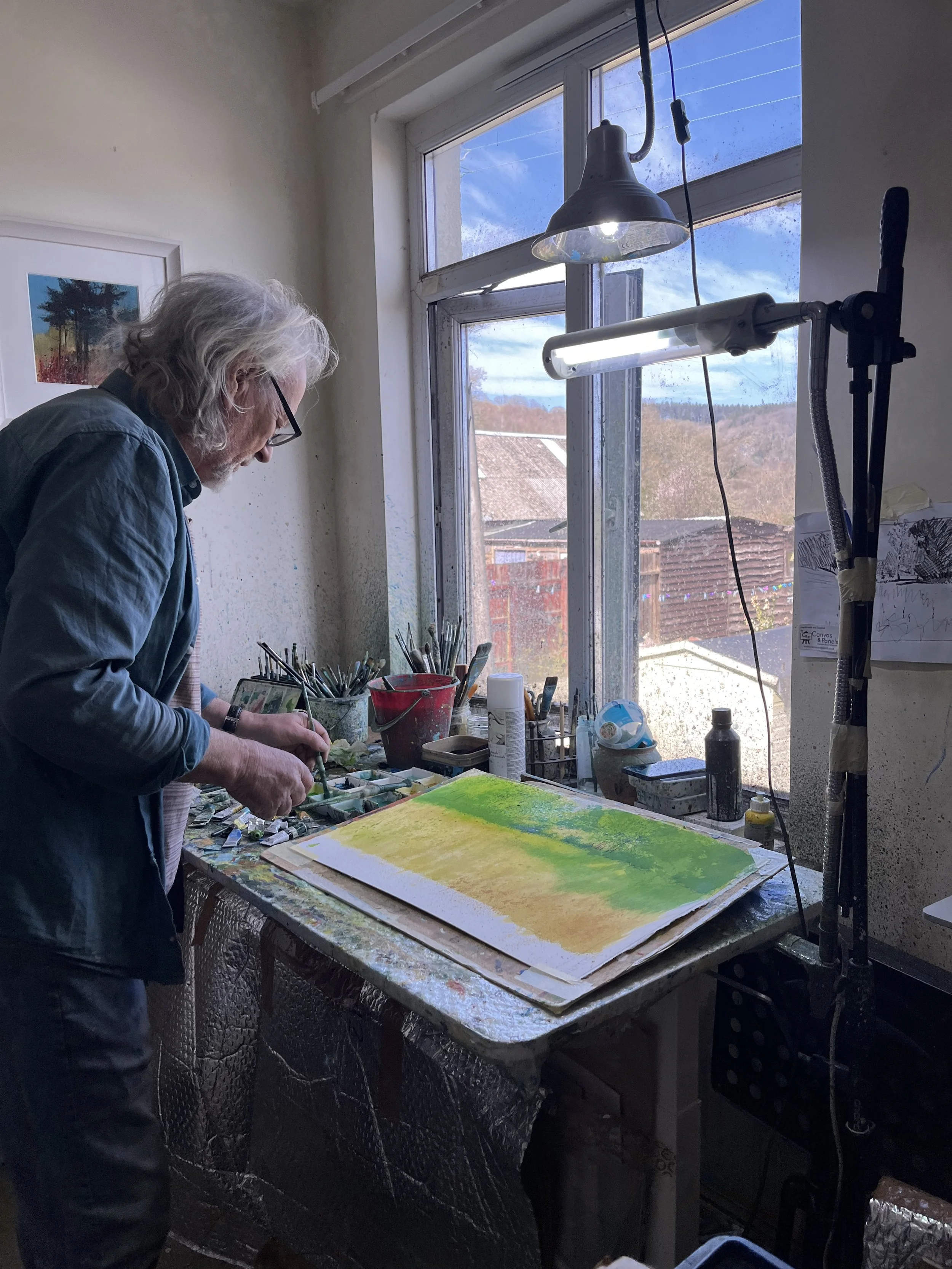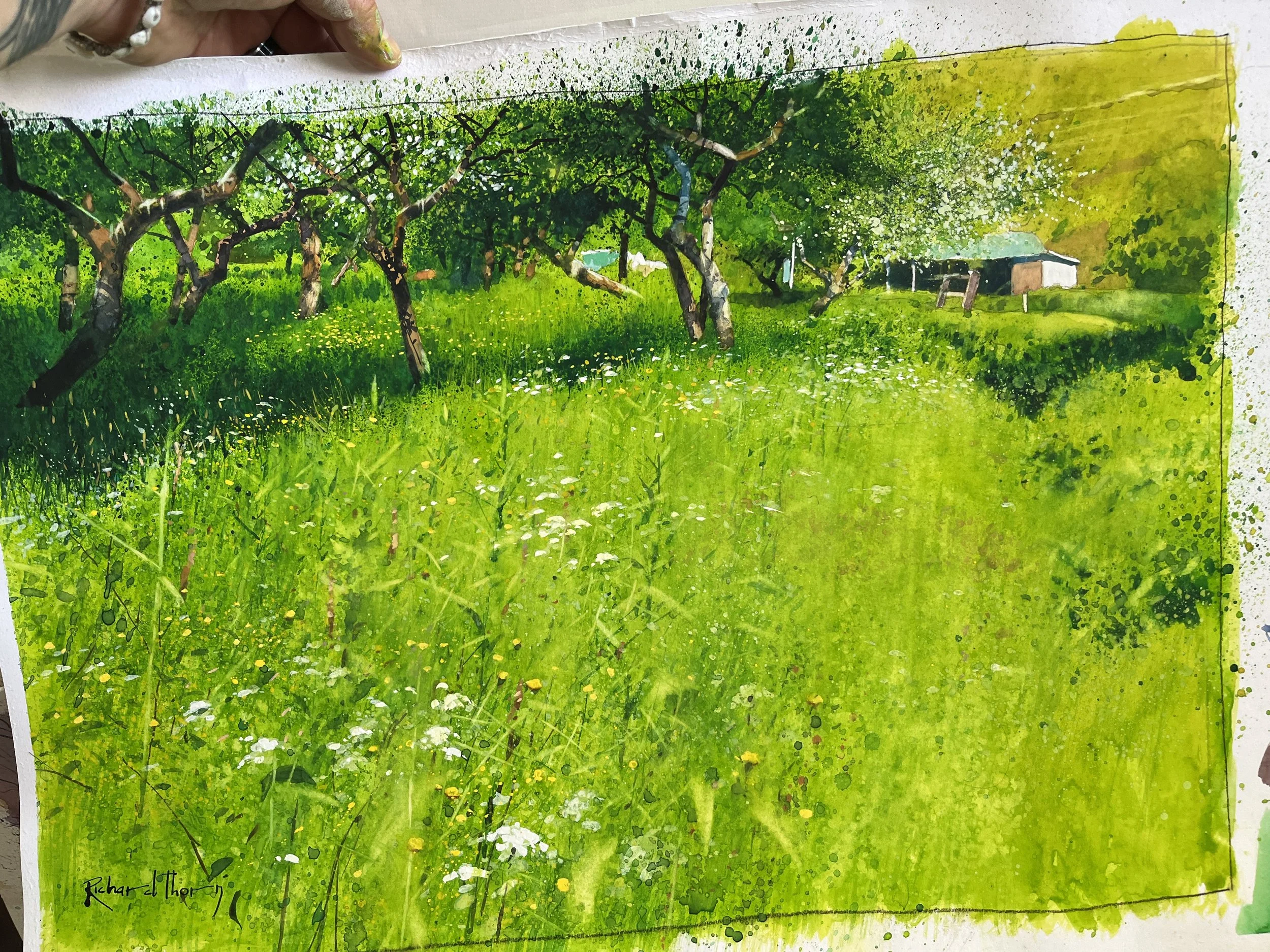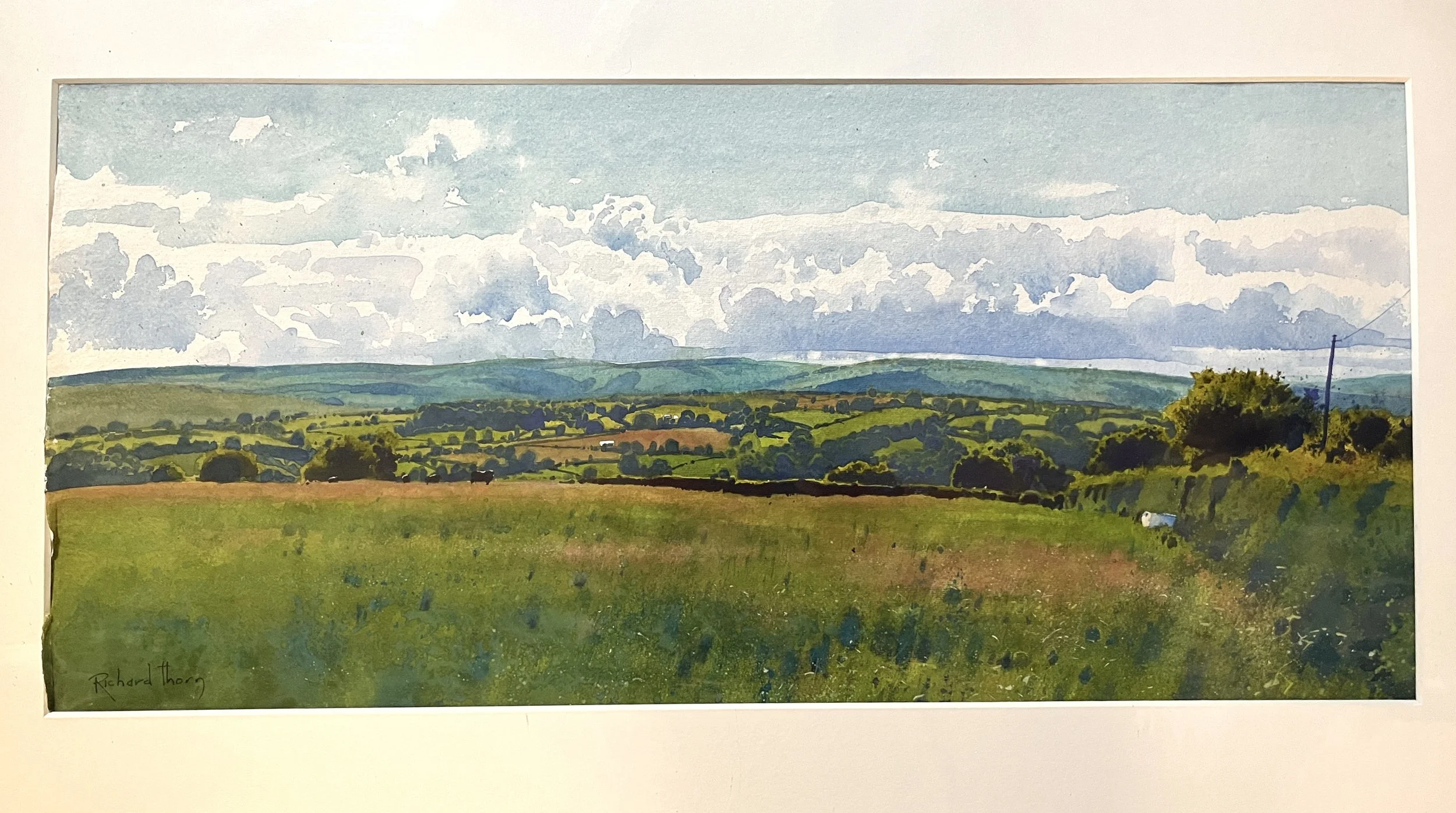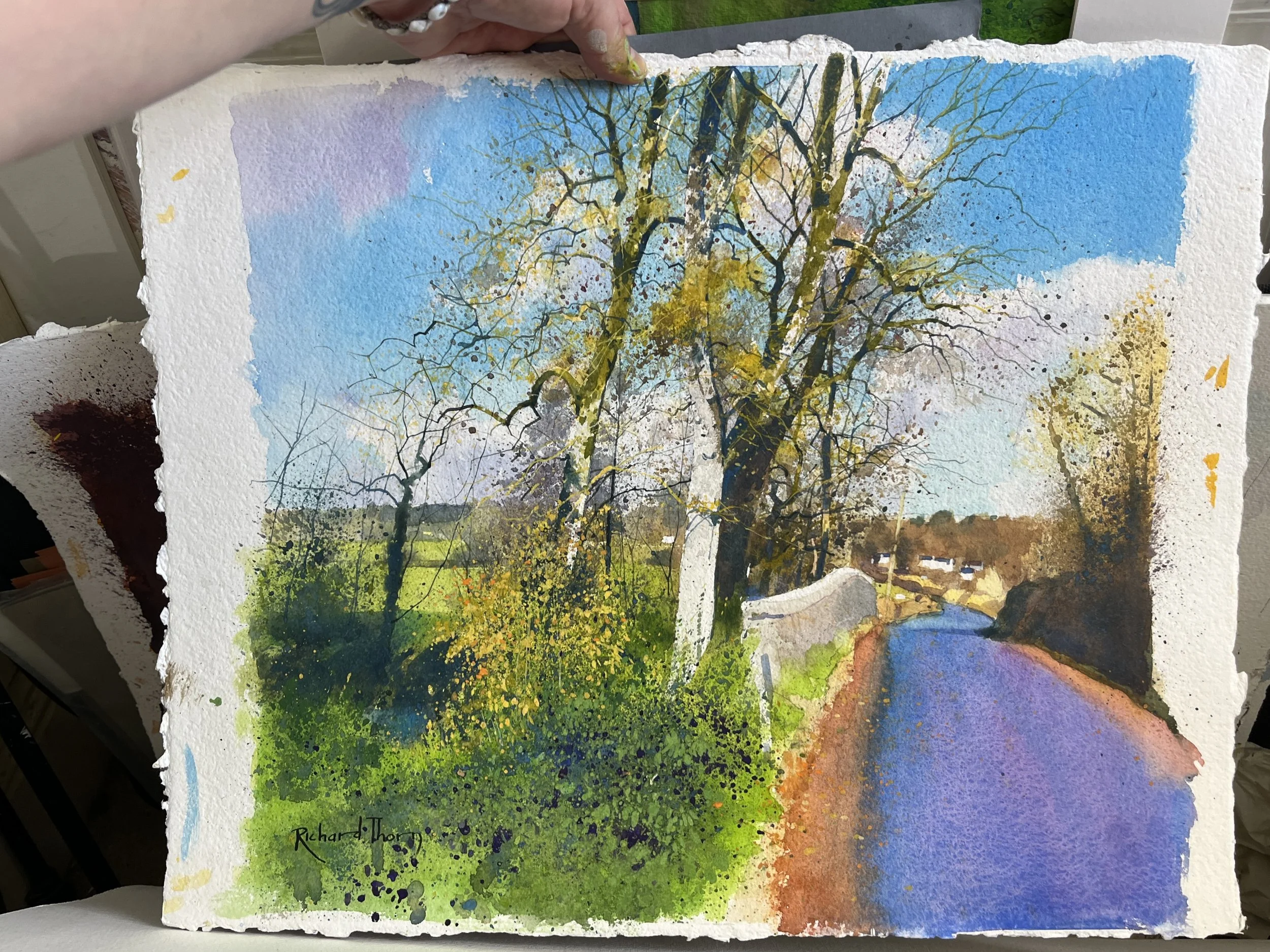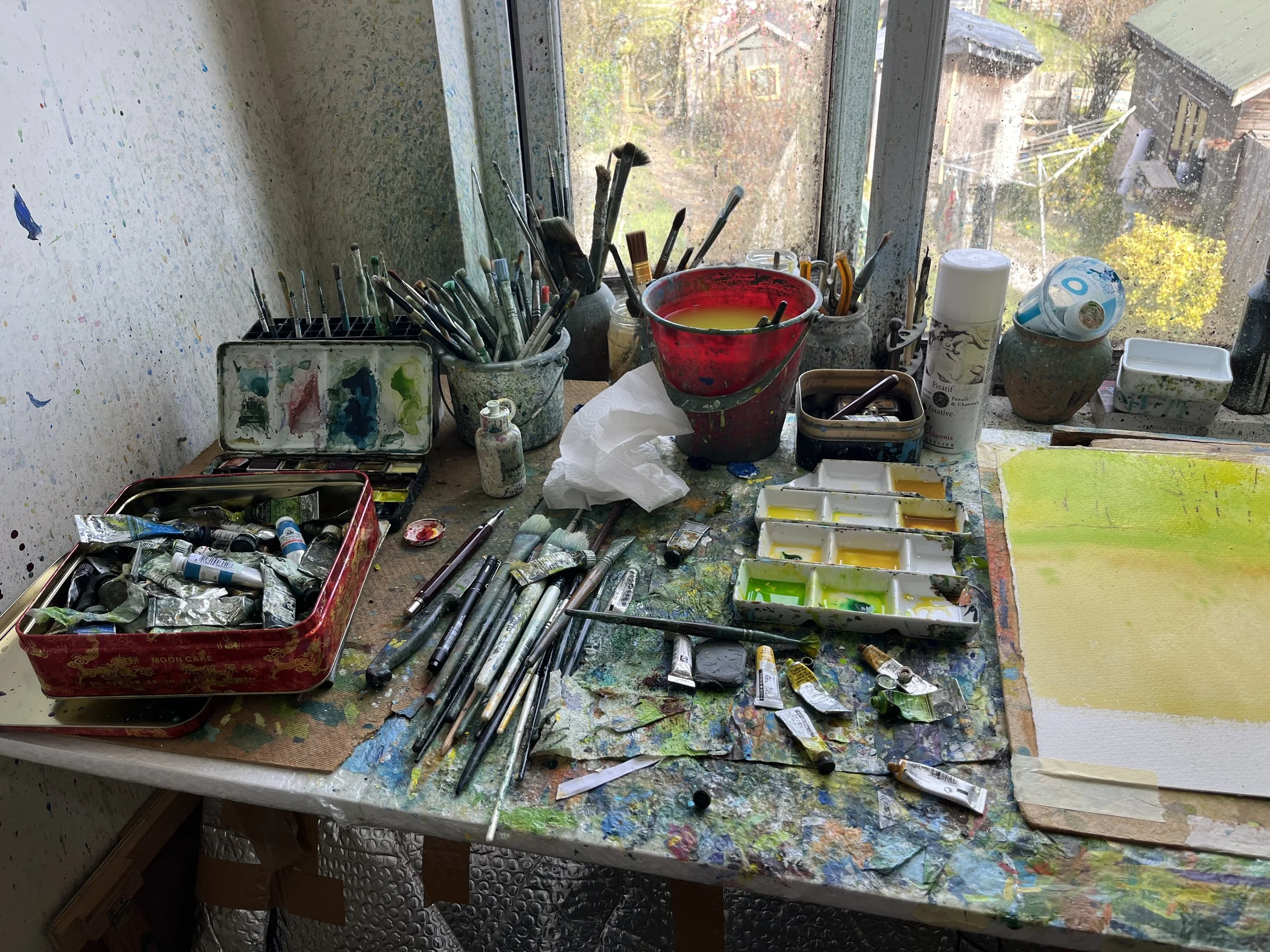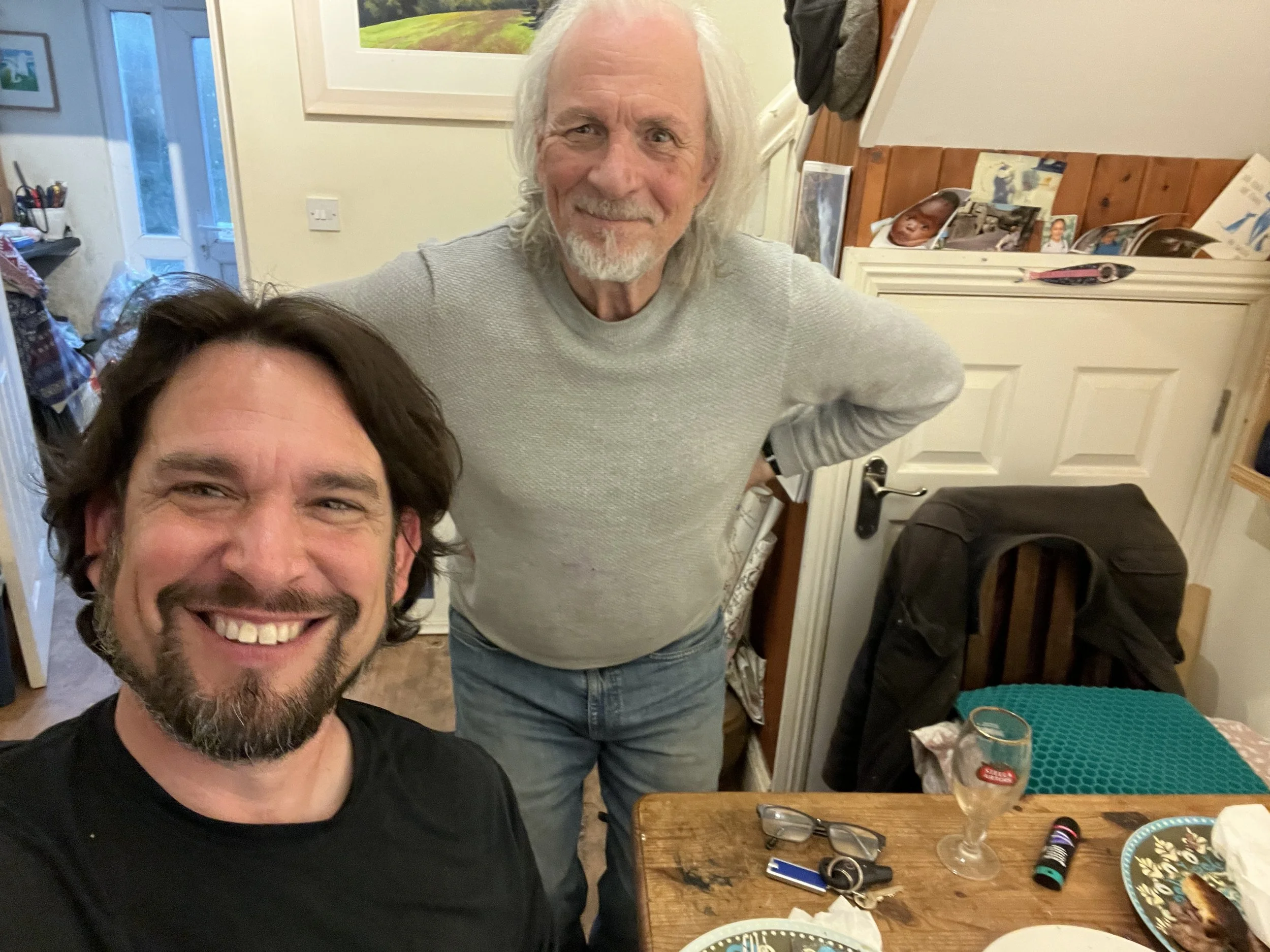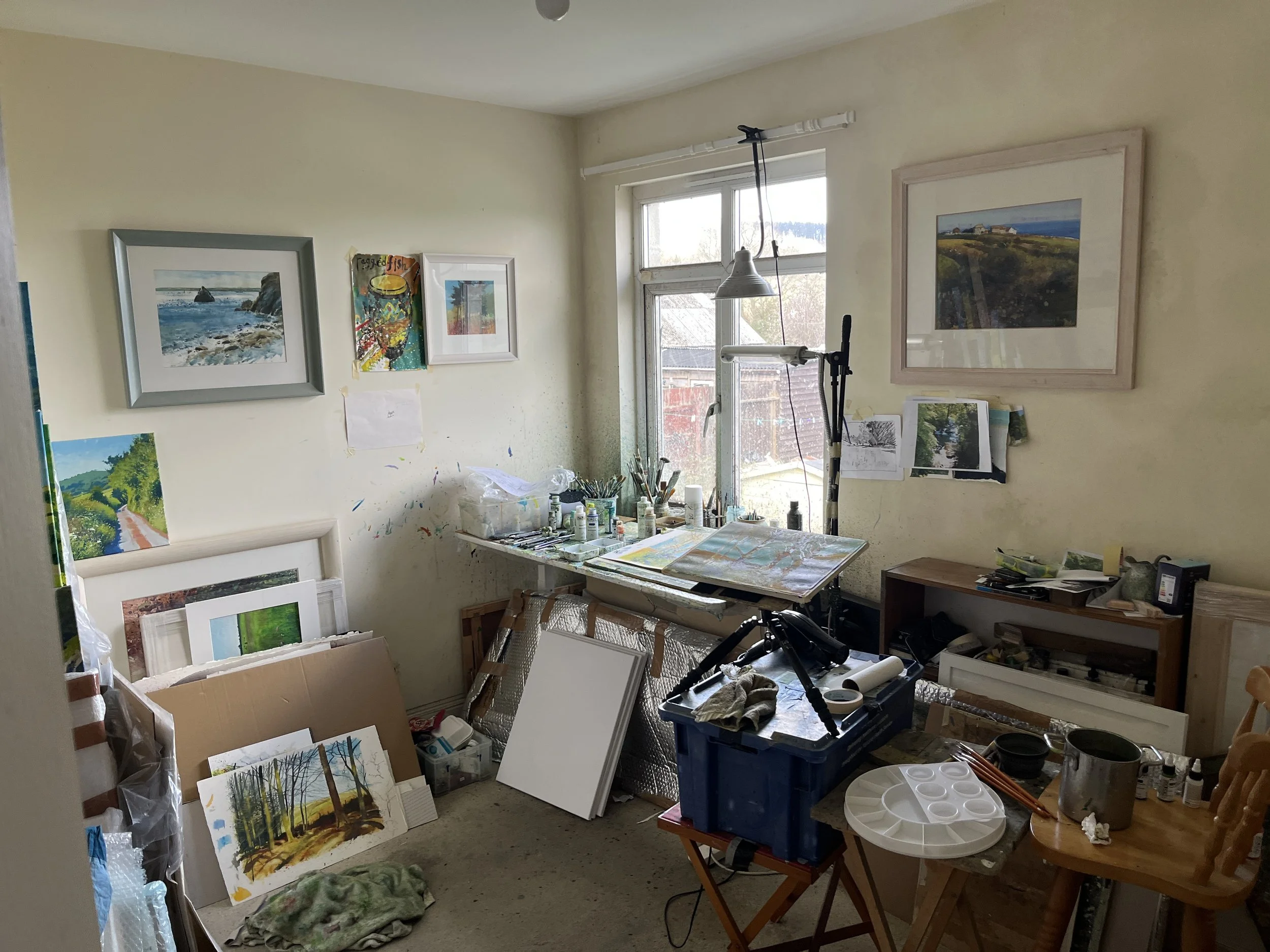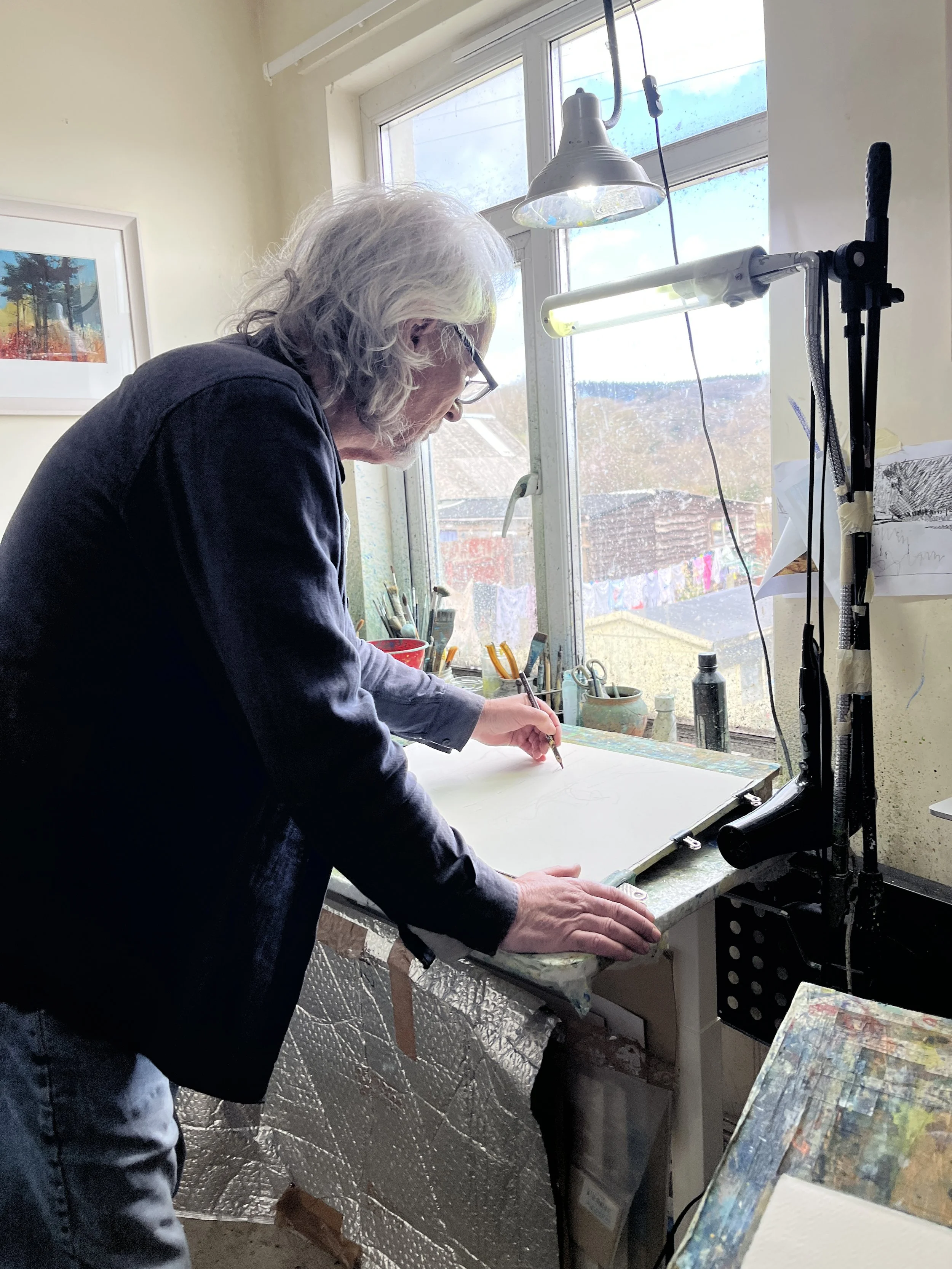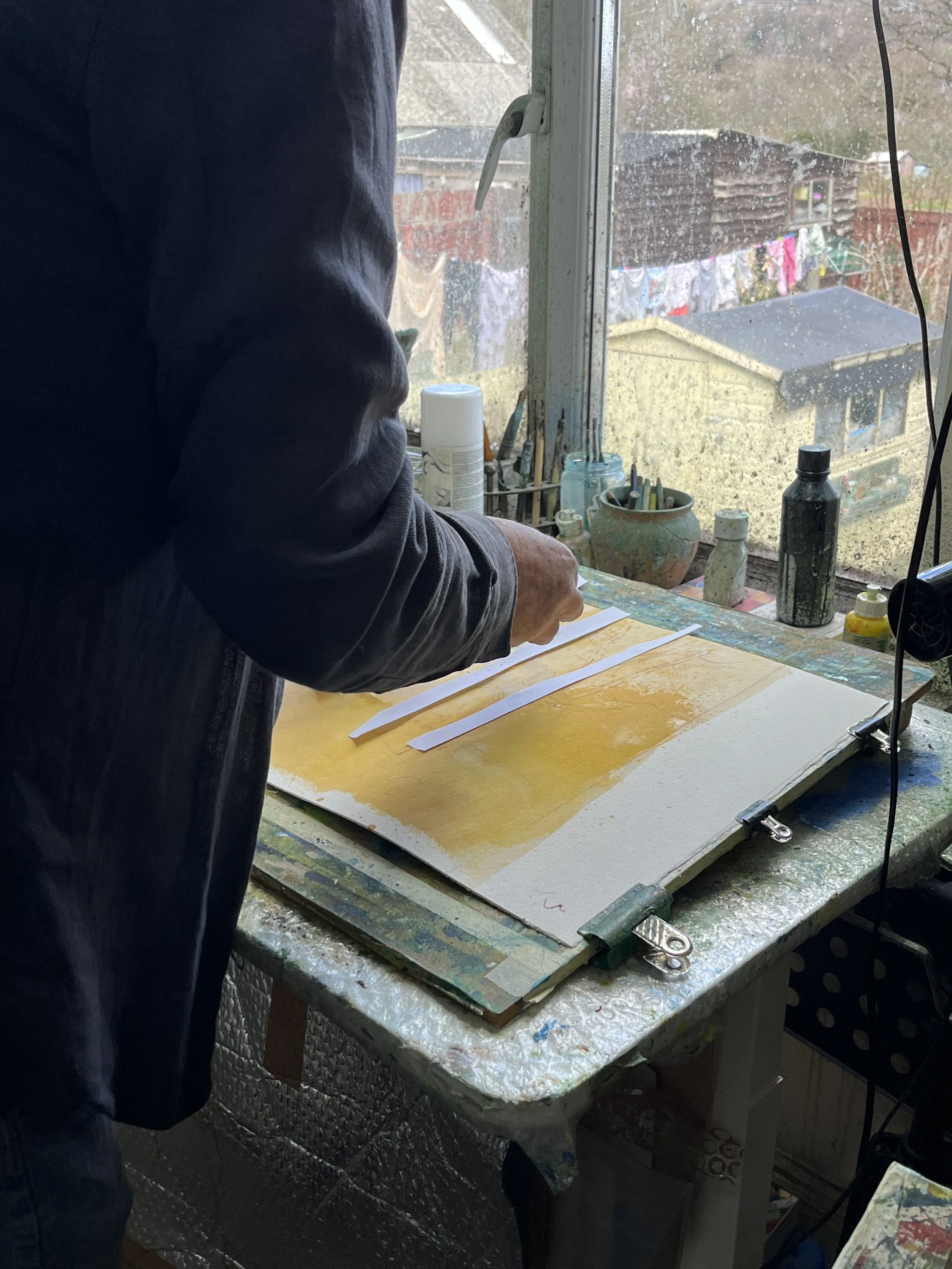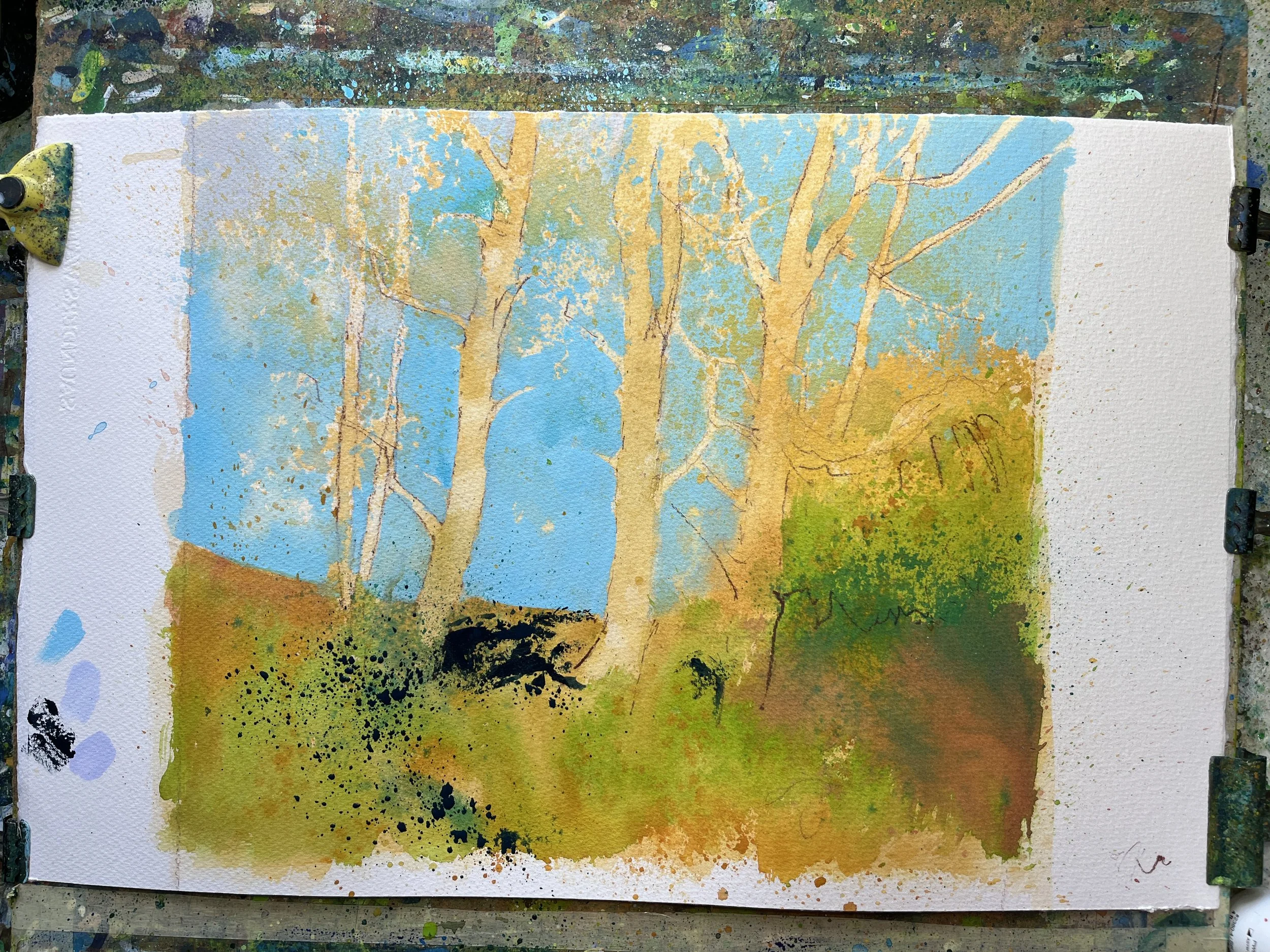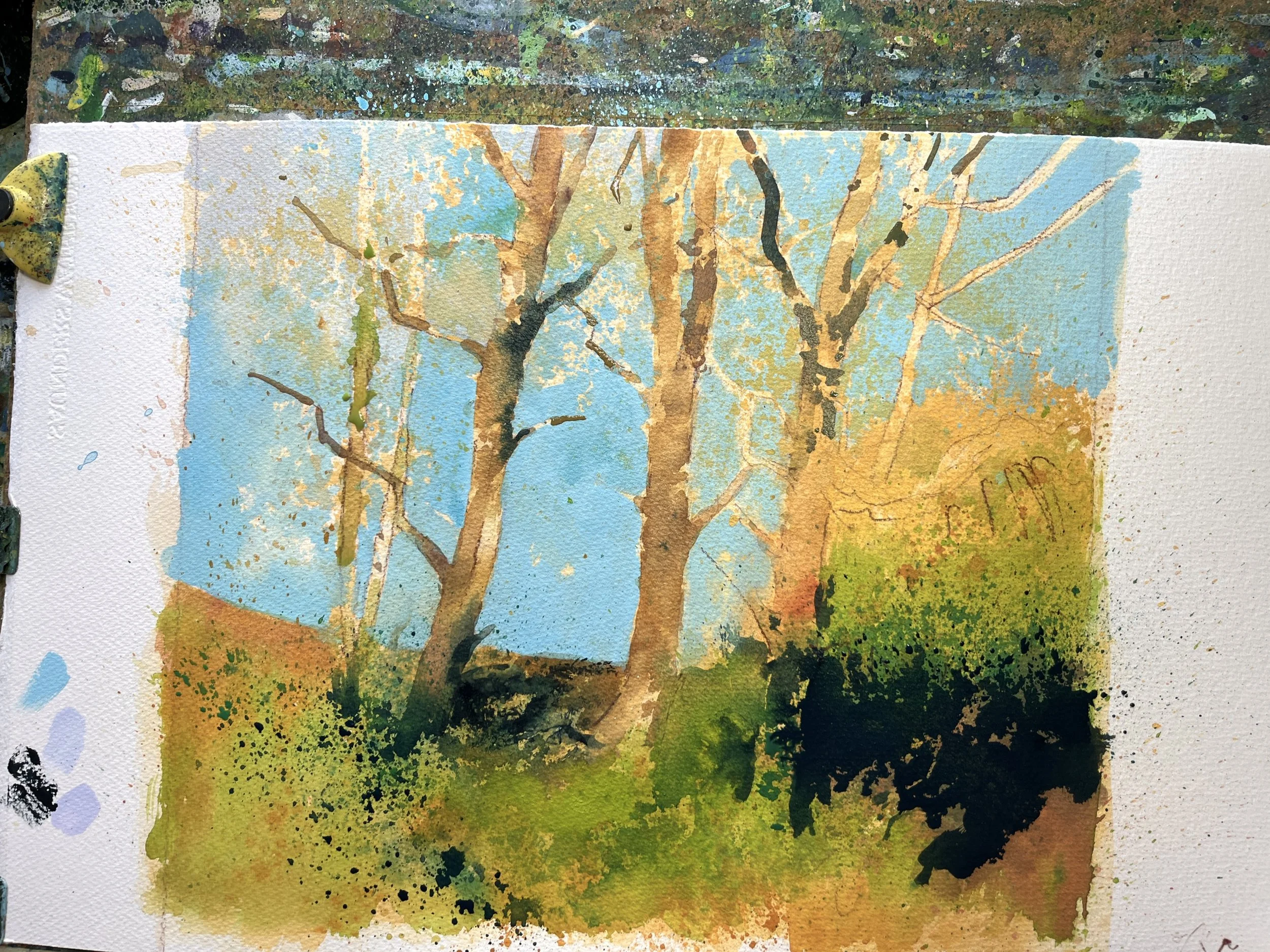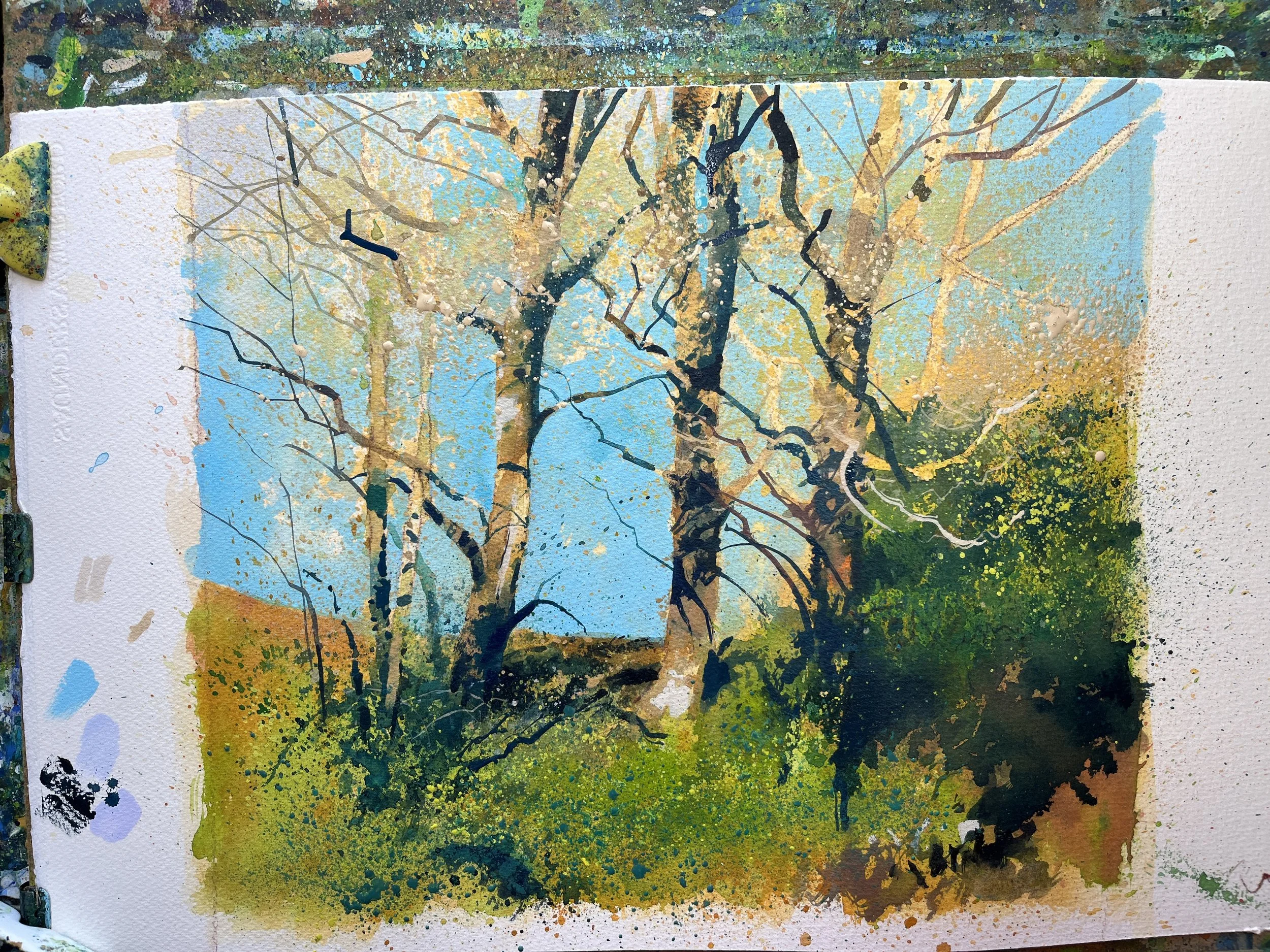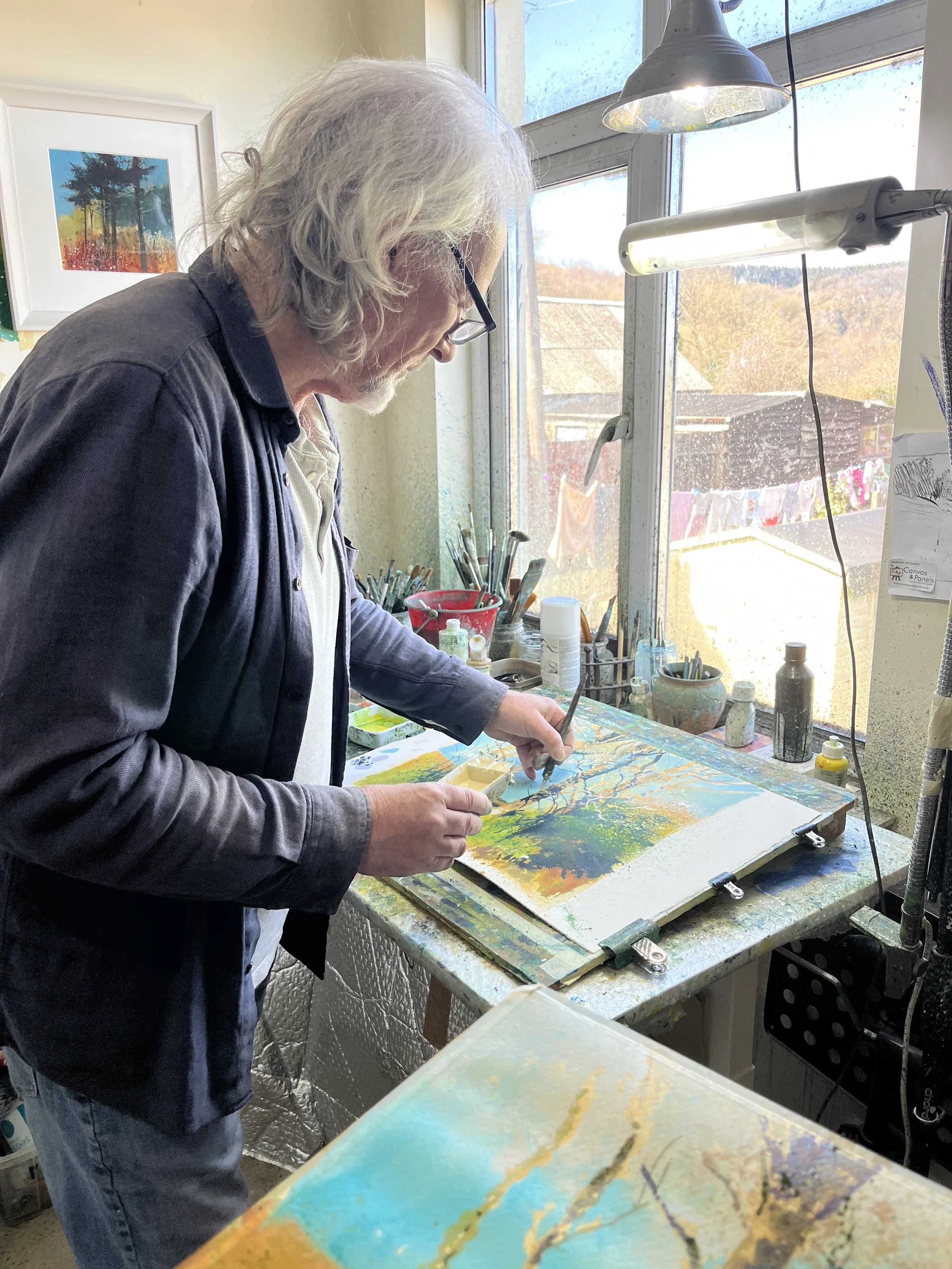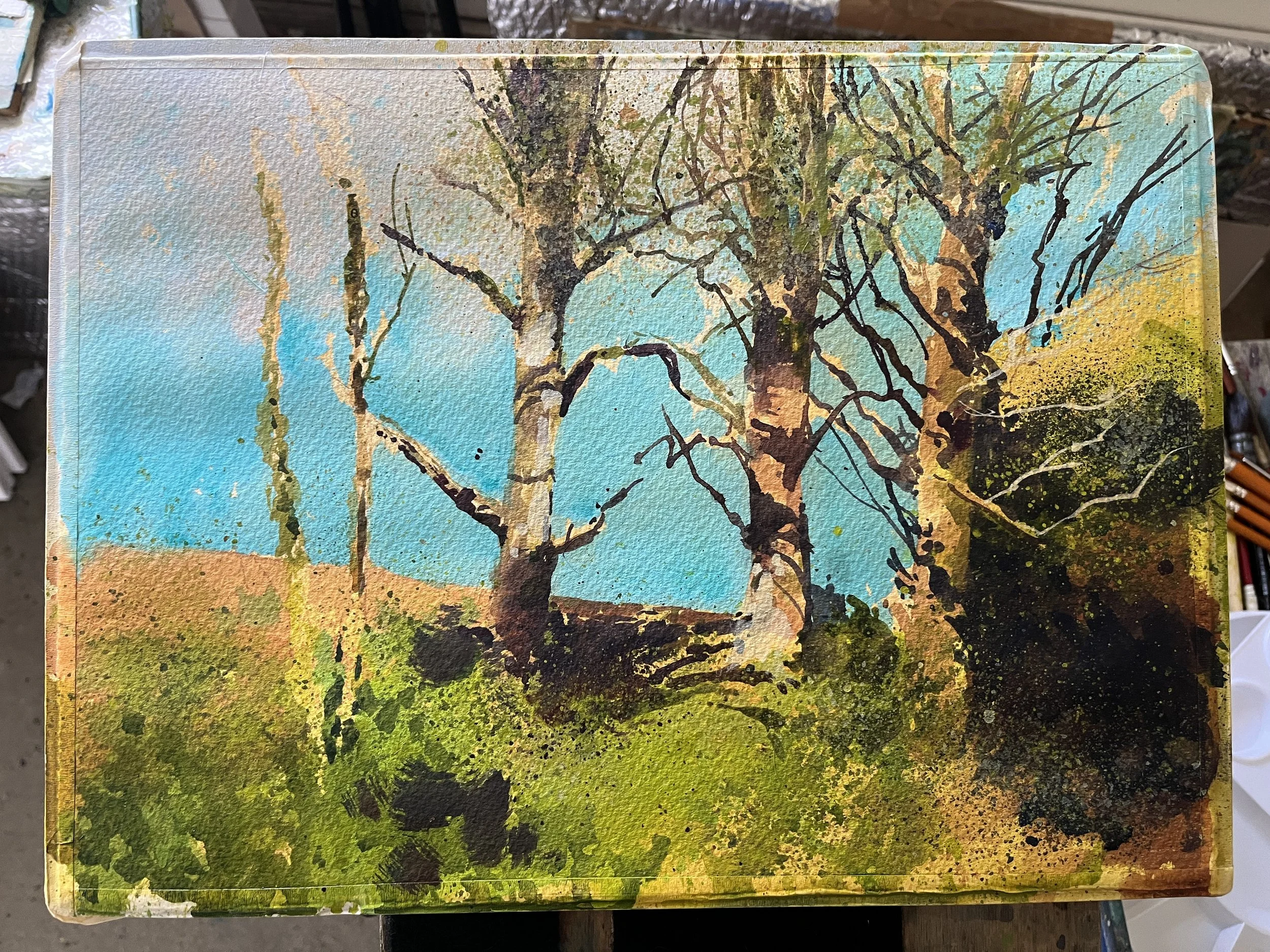Studying with Richard Thorn, pt 1
Richard Thorn is a fantastic British watercolorist. I’ve written about him before (here’s a Spotlight post I did on him years ago). Before we dive in to my time studying with him, I thought I’d start things off with a gallery of some of his recent work. By the way, all of these pieces were in his studio. So they’re also probably still available. Hint, hint! I brought some others home for myself! :D
Late this March I made a trip to England. I shared some online about my time at the RI watercolor show in London. But my real reason for going was so that I could study with Richard Thorn, after many years of wishing I could do so. Richard offers personalized learning opportunities to students. I saved up my pennies and booked 3 days worth of painting together.
It was fascinating painting with Richard. He paints with watercolors and acrylics in a way that is unlike anyone I've ever seen before. He has a stellar control of texture and color.
He is the master of, as he somewhat jokingly called it, "the fine art of splattering and stippling". Having painted with him for 3 days, I would definitely call this his signature technique. I've splattered paint, and seen others do it too, but never as much as he does, nor with the precision with which he uses it. He would sometimes do washes (early on as a base coat, and then later in the game, as a corrective glaze), but they were infrequent. Instead, perhaps 50% or more of his process was slowly, gradually building up layers upon layers of splattering. At one point, he actually noted that "Texture and color always come first for me. Only later do we do form," which was true for his approach.
He also didn't use a normal palette with mixing areas, but instead had a collection of little wells (maybe 3cm x 3 cm each), where he opened up fresh pigment (different in each one- put there at the beginning of the day, direct from the tube, for each painting's specific needs), mixed it as required into a good sized pool, and went from there.
He also didn't use any mops! Instead it was probably done 75% with various amazingly scruffy acrylic or oil brushes, even for the washes. He also uses dip pens with his paints!. Oh, there's lots to talk about. :) It was very liberating to watch an artist work in a totally new (to me) and individual way.
Being an Active Learner
I've learned from painters like Richard before- they are absolutely stellar painters, but don't have a built out framework for teaching. Everything (seemingly) is organic and artist-to-artist. Maybe Richard thinks otherwise? It sometimes felt more like we were simply painting together, chatting and whatnot, rather than that he was attentively "teaching" me. Often, he would get drawn into his painting process and just focus on it for 30 or more minutes. I would follow along as best I could. I'd never painted acrylics before, so I didn't really know what I was doing, but I have years and years of experience with watercolors, so I made up with hutzpah and guesswork what I lacked in media knowledge.
I don't know, but suspect (having been a student of his now), that you would greatly benefit if you knew what you wanted to learn from him and you weren't a novice. I don’t think being a beginner student trying to learn from him would work best. It requires a certain kind of curriculum-based mentality, patience, and student-focused approach that would not lean into his strengths.
Instead, he did other things (very naturally and with an unaffected air) that were also very lovely and helpful. We collaboratively decided what to paint by looking through his photos, with him being deferential to my interests topically. We discussed composition and how he would approach different subjects, almost all of which we didn't paint, but from which I learned a lot anways, based on the conversations we had. If I had questions (and I did) while he painted, he was always sure to respond and give me a quick helpful response. But it was infrequent, once he started to get in to the process of painting, that he would break away, focus on my work, and proactively give me input.
These scene of the crime for 3 days!
We only painted a painting a day. I actually never 100% finished a painting. We just went until we ran out of time, and then started a new one the next day. Lessons went from 10-3, often with prep and choosing a subject in the beginning, and then lunch, taking up a combined hour. So, we would spend approximatley 4 hours on a painting. Might I have learned more about technique if we did quicker smaller paintings? Yes, I'm sure I would have. But, as someone with a lot of experience, it was also very educational to work with him on what I felt were "real" paintings with real challenges to figure out. Plus he let me take photos as we went, so I can always refer back to things later.
You'll see as we get into some of the subjects, but I deliberately tried to set things up to try out 1) different subjects I'd seen him paint that were also of interest to me, 2) subjects with different technical challenges that I didn't really have an answer for, wherein I could learn by watching his general approach and in-the-moment problem solving, and 3) different media and materials- acrylics on paper, acrylics on canvas, and watercolors on paper.
Day 1- Acrylics on Paper
For the first day, we went over refernece photos- of which he has a million lovely ones, all stored away in different folders- and I decided to try and work with acrylics on paper. He used 300 lb Saunders. I used 140 lb. I taped mine down, but he just used bull clips since it doesn't warp much, and then set his board up at a gentle angle.
I figured I knew the least about acrylics (I've never painted with them before), and so doing them first might allow me the most time to get help, ask questions, etc. Thorn assured me that his approach to acrylics was very similar to watercolors, and that it "should be, as a watercolorist, like getting into a warm bath." I took him at this word.
So was it? Weeeelllll, perhaps more like a tepid bath. Hahaha. I had a variety of challenges. Which were frustrating. But that's part of learning and that's what I signed up for. That's what I kept reminding myself, and what my wife kept telling me by text in the evenings. Hahaha.
He did, broadly, work light to dark in the first 3/4 or so of the painting, much like with watercolors. But he liked painting the trees negatively. So what we did first (after a very simple and rough sketch in conte)…
before anything else, was to drop in a pale brown wash, with splatters and such.
Maybe, if we had painted the sky first and then the trees, the splattered and textured nature of the trees would have been hard to do without ruining the relatively flat nature of the sky? Perhaps. Regardless, we then painted the clouds and sky "behind" it, cutting around the trunks and largest branches. This really twisted my mind around in new ways!
Next, he cut some simple strips of paper and laid them over the tree trunks, as a simple quick kind of masking tool.
This is because he splattered the upper parts of the sky in, over the brown background, creating an organic mix of skyholes and twigs- which read as twigs, despite being totally non-linear.
Later in the game, he would go back over what he did here with more splatters- pale brown next time. Although interestingly, for that process he would do the splatters, and then draw his twigs and such in, wet into wet, connecting them to the splatters, creating an organic combination of dots and lines. All the time, he was creating splatters, and then "taking advantage of them", with stippling or linework, sort of sheperding them a tiny bit back into orderliness, so they would do the job he needed. Anyways, this back and forth process was central to his working process, creating dynamic and organic mixtures of texture and color, that would be very hard-to-impossible to do with typical mark making processes.
Here you can see the results of the work in the sky, as well as the beginning stages of the foreground. Look, it's the hint of a wash for the grassy foreground and bush on the right! LOL. Not to worry though, because Richard slowly began to intermix and weave the colors together with textured masses of different splattered colors! ;P And when I say he did some splattering, I mean the man did some splattering!! But almost always, too, he would integrate them- with fresh wet into wet linework, or stippling with the tip of his scruffy brush, or by kissing the edge of the splatters with water, to have a soft edge.
For the trees, he went through a similar process. Doing a slightly darker base color here and there, keeping highlights in a very watercolory way. I joked with him that we had entered the ugly stage- things really did look a bit of a mess. But he started to drop in his darker darks on his trunks, and things really started to come alive. Sometimes he used the darks to cut a cleaner edge on the tree trunk's shadow side. Slowly, the shapes of things became clearer, the directionality of the light more obvious, through the use of the darks.
Finally, we came to his lovely work with the dip pen, mixing up a bit of body color with Naples Yellow, or Yellow Ochre, and white. These were some of his favorite muted "highlight browns" that I saw him come back to repeatedly, over and over again, each of the three days.
Here his use of acrylics because more and more obvious, as he continued to layer his highlights on top of his darks, with splatters and line work and such. Back and forth. I do some similar things with watercolors and gouache, but the acrylics maintained their opacity quite well when splattering, even when they were a bit diluted and watery. This is nearly impossible with watercolors if you want to make a highlight- I have to get pretty thick to get a pale value to be opaque.
I often have to push the contrast to get this technique to work with my normal methods, but Richard would often mix a value that was somewhere inbetween a true highlight and a middle value. So his "highlights" always had a bit more color than you often get with watercolors- that midvalue range is where a lot of colors are at their most vibrant.
My Own Work-
As I mentined before, I had never done acrylics before. But I can do a wash and such. ;) Still, I had logistical problems- different paper weight, different brushes, different pigments, different paints. LOL. I accidentally got "High Flow" Golden Acrylics instead of "Fluid Acrylics" and it did make atleast some difference. I felt the paper was acting a bit differently too. And my brushes acted differently too. I didn't understand how much stippling he was doing, and my pointed rounds and straight flats just weren't able to get the same marks as he did.
It's not meant to be a sob story, though Hahaha. But I wanted to mention it because I know what it's like to be in a workshop and to struggle with your tools. Tools aren't everything, but they make a difference. They can change how you paint, how you make marks, how you paint wet into wet, how opaque or vibrant your colors are, etc. They're important.
In the next post, I’ll share more of Richards (and my own) work over the final few days, as we try out painting on canvas with acrylics and then, on day 3, a return to watercolors on paper.
